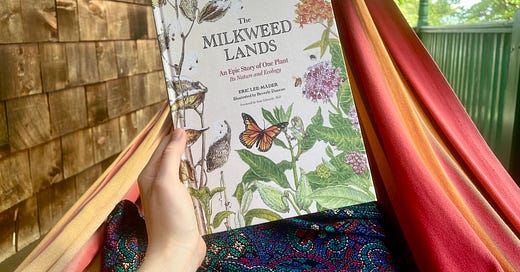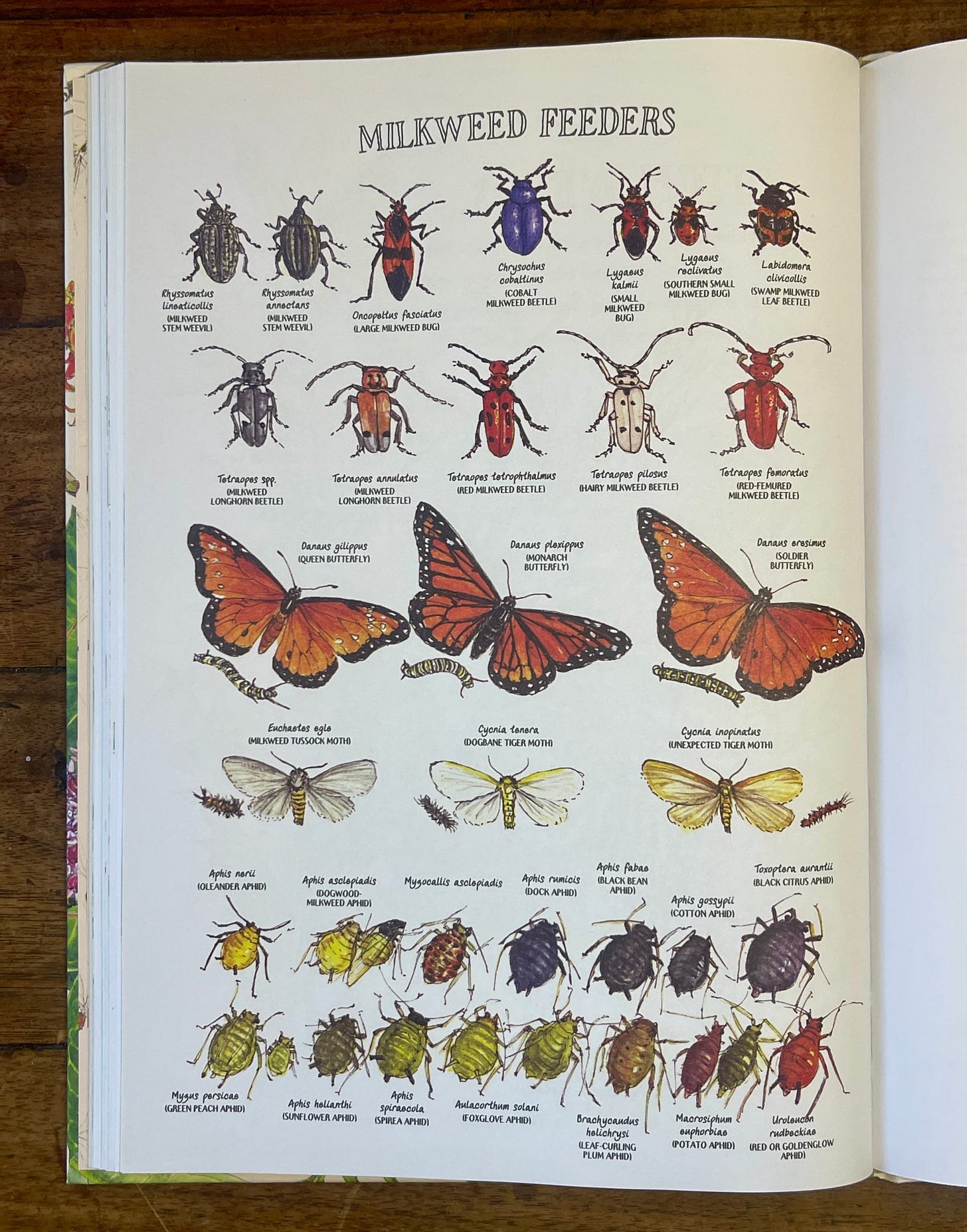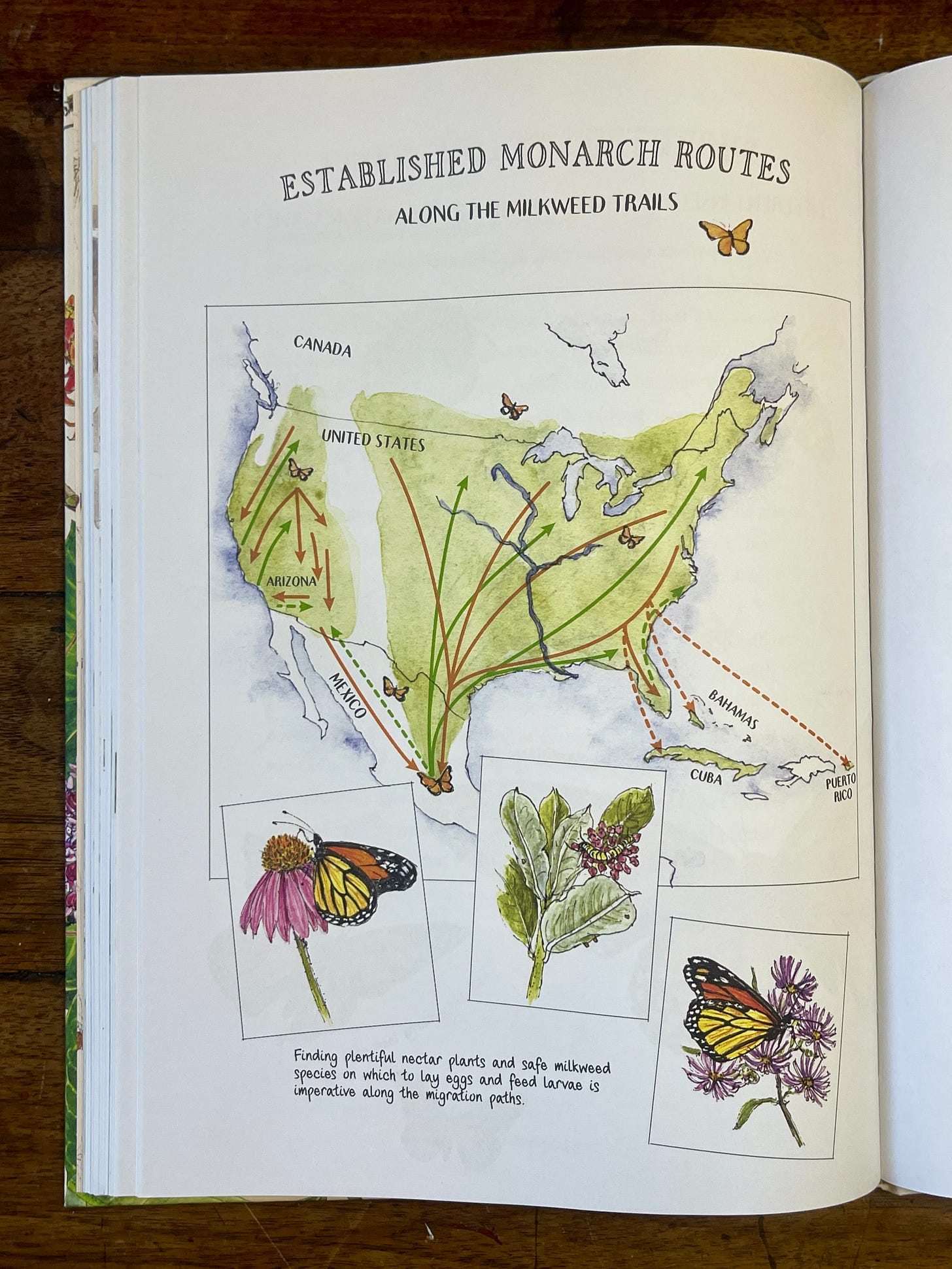June Book Review: The Milkweed Lands
The illustrated story of milkweed's ecology and importance
Hello from a sweltering hot day in West Virginia! The perfect time to relax in the hammock with a tall glass of sparkling lemon-water and spend some time with an art-filled book. Today for our June book club edition, we’re taking a close look at The Milkweed Lands.
Throughout the The Milkweed Lands’ 114 pages, you’ll find countless ink-and-watercolor illustrations by botanical artist Beverly Duncan and captivating stories about the nature and ecology of milkweed from ecologist Eric Lee-Mäder. Readers are regaled with the history of how milkweed once covered huge swaths of North America before it was unfortunately deemed an enemy of commercial agriculture, tales of the insects and critters who rely on milkweed for sustenance, illustrations of the plant’s seed dispersal methods (like partnerships with ants and aphids), and accounts of re-wilding success stories where milkweed populations have rebounded.
The slender little book provides a comprehensive picture of a plant that many of us have grown to appreciate more deeply now that monarchs are endangered. And if you didn’t love milkweed before, I’m certain that you will after reading this book.
A video flip-through:
The Milkweed Lands came out in 2023 and it’s caught my eye ever since in the nature sections of bookstores. I typically don’t purchase a book the first time I see it on shelves, but if I keep thinking about it for a while I’ll return for it. That was the case with this beauty.
This is my favorite kind of book: it feels like a picture book in size and the fact that it’s bursting with hand-drawn illustrations, but the written content is clearly intended for adults. I often find myself wishing that there were more “picture books” for adults in the world, and this one scratches that itch perfectly.
I really enjoy Beverly’s nature journal-style pages that combine art and hand-lettered text to narrate biological processes, maps of migration routes, and the anatomy of plants and animals. As a nature journaler, it’s inspiring to see this format used for published books and gives me new ideas for page layout, lettering, and style in my personal nature journals. Beverly’s style has a definite vintage feel, but the approachable, updated language accompanying each illustration makes everything feel accessible to the modern reader.
As someone who was somewhat familiar with milkweed already, I learned far more from this book than I thought I would. For example, did you know people used to grow milkweed in their victory gardens to eat during World War II? Apparently they would cook them like asparagus tips and serve with mayonnaise or French dressing. I also was surprised to learn that when the United States entered World War II, milkweed seed pods came to the rescue as filling for life-vests when there was a dire shortage of naval life vests. More than 12 million pounds of dried seed pods were picked and sent to the processing plant.
Hope you enjoyed this look at The Milkweed Lands! See you in July. And as always, feel free to leave a comment with your thoughts on this book or suggestions for future selections for The Nature Art Book Club.


















Ohhh! I wasn’t aware of this book! Thank you!
Looks like a great read! You may also like the Cold Canyon Fire Journals by Robin Lee Carlson, it also features a lot of nature drawings from the author.